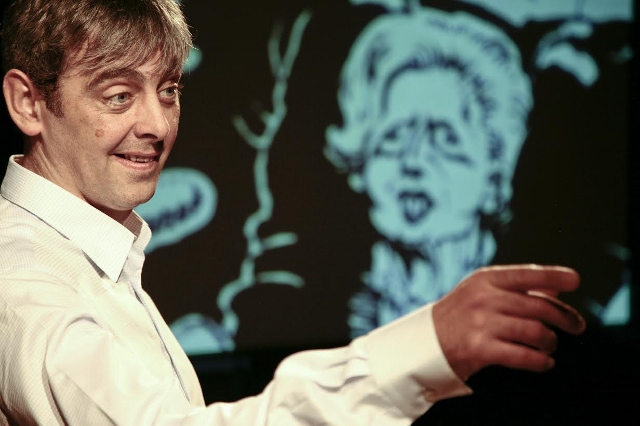There can’t be many choreographers who can also claim to be the honorary vice president of a colliery band. But Gary Clarke is not a typical choreographer.
Born in the South Yorkshire mining village of Grimethorpe, Clarke was raised on the front line of the Miners’ Strike of 1984–1985. The attritional dispute between the National Union of Mineworkers and the Conservative Government was, arguably even more so than Brexit, the most divisive event in living political memory, pitting working class communities against the ruling party, and turning families in upon themselves. Maligned by Margaret Thatcher as “the enemy within”, in defeat the vanquished in this uncivil war were treated with an indifference that is hard to distinguish from spite.

Wasteland. Credit: Joe Armitage.
Clarke’s latest work is a companion piece to his own feted Coal, in itself a response to the strike. Wasteland picks up the pieces in the aftermath of the miners’ defeat, tracing, through the lives of a father, P.J. Hurst’s Last Miner, and his son, The Boy, danced by Robert Anderson, how the beats generation that followed the beaten one forged a new community out of rave; a cultural youthquake whose fissures opened up fresh seams of confected tabloid outrage.
Its opening sets the tone beautifully. To the mechanical rhythm that tolls the passing of an industry and prefigures the repetitions of rave, imbued by Hurst with an empathetic dignity, the lone figure of the Last Miner staggers onto the stage, lager can in hand, reeling into and out of grace, hawking up coal dust from his lungs before unleashing an almost primal scream.
The Boy and his peers are introduced with similar economy. Almost monastic in their dark hoods, like the figures in Anton Corbijn’s video for Joy Division’s Atmosphere, they crackle into life to the charge of Test Department’s Compulsion, its stark insistence acting like a sonic defibrillator to the living dead, giving them something more to do than hang around in supermarket car parks, sniffing solvents.
Listening to pirate radio in his box bedroom, The Boy responds as though receiving transmissions from a life more vital than his own. In the days before WhatsApp, the sense that its frequencies are clandestine, passing beneath the notice of an older generation sleeping in front of television sets, only adds to the excitement. Shopping trolleys, once off-road vehicles for the disaffected, are now makeshift forklifts for speaker systems; in the reclaimed warehouse, the abandoned can dance with abandon.

Wasteland. Credit: Joe Armitage.
As the rave progresses and the drugs kick in, the scenes which follow allow the ensemble to embody a social anthropology of 90s dance shapes, with an almost chemical commitment. While the narrative pace slackens, the freneticism achieves a different kind of intensity, even if there’s something a little jarring about the moments in which The Ravers dance in step, like subliminal images of Top Of The Pops dance troupe Legs & Co in an altered state.
In spite of displaying an entrepreneurial spirit entirely in keeping with Thatcherite rhetoric, it’s decreed that they have made the wrong kind of something out of nothing. Like contemporary panics over grime and drill, the state has always been quick to proscribe the uses the marginalised make of their time. The same police force that forced apart picket lines in the Miners’ Strike now enforce the same government’s laws on the strikers’ children. Having shouted inarticulately by necessity, above the sound system’s clamour, it is only once the party has been broken up that they find their voice.
While in its rush to tell its truth it can occasionally feel over-determined, Wasteland is often most affecting when at its least literal, allowing the tableaux its motion creates to carry the heft of its narrative. The early scene in which the Last Miner solemnly watches home movie footage of the demolition of redundant pit heads, while himself collapsing in sympathy with them, hits home more deeply and forcefully than words.

Wasteland. Credit: Joe Armitage.
The idea that commonality crosses lines, whether generational or occupational, is eloquently conveyed by the way in which the well-deserved curtain call is taken – the dance company hand in hand with the brass players from the W.F.E.L. Fairey Band and the four Pit Men singers of the Manchester cast, both of which have functioned as a chorus throughout. A simple show of unity in a common cause on a day on which the waves of a number of separate disputes reached tsunami proportions in town and city centres across the country, it suggests the wounds of the past are not so different from the slow eugenics of renewed austerity. Like the voices resolving out of noise, tuning into pirate radio, it’s a call to resistance.
Main image by Joe Armitage




Click here to check out what else is showing at Contact.











